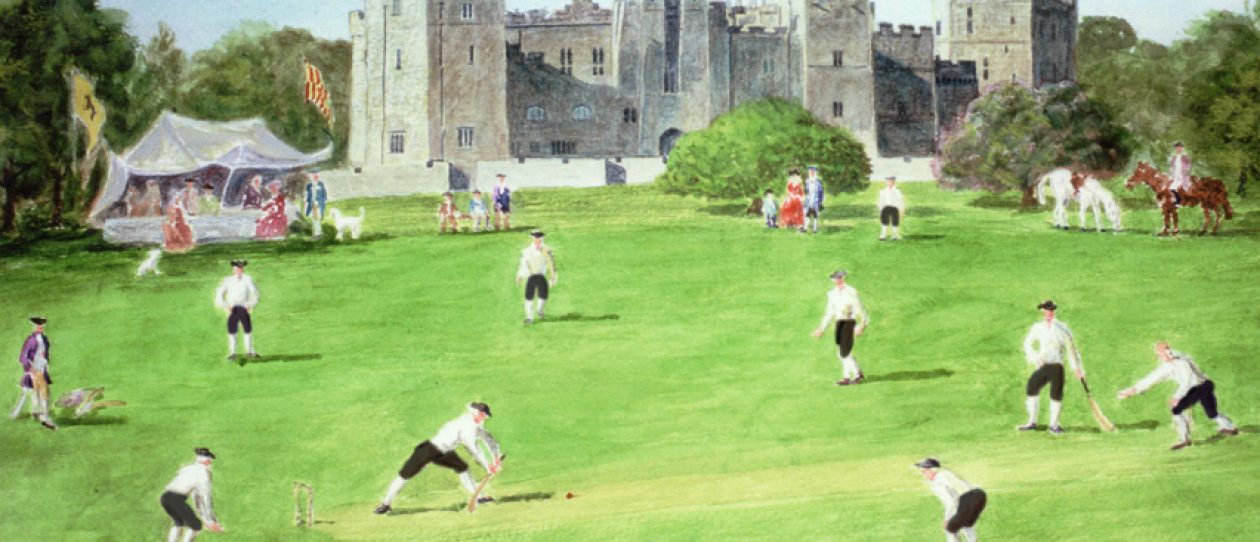Bowen justifiably argues that women’s cricket is not a separate object of study in cricket history.[1] After all, women played cricket long before the Raby match and are an integral part of cricket’s family. Players marry and have children. Wives, sisters and daughters take interest in their recreation and interest sometimes turns to participation. Yet Victorian dogma held it undignified and hoydenish for women to play.
Little is recorded of Victorian women’s cricket in Durham. Like Cesario, their history is a blank. R.S.Watson recalled seeing “many a match between two elevens of ladies”. Mrs Dales, wife of an industrialist and Darlington benefactor, remembered being taught to play by her father in the 1850s. There is not much description of women on the field except most were single and few bowled over-arm. Of names in the press, we might muse idly upon Miss Jack King or Miss F.E.Mail; ponder the potency of Miss Mitton’s ‘yorker’ or Miss Booth’s “steady blocking game”. Whatever their characteristics the essential point is that the same cricket terms are used for women as for men.
Shortly after the issue of women’s suffrage reached parliament Ladies of Gateshead played Gentlemen of Gateshead. The sexes met during the remainder of the century. To redress any physical imbalance women used cricket bats and men used broomsticks or pick-handles depending on the locale. Men had to field left-handed or incur a penalty of 3 or 4 runs. Press reports waxed lyrical about ladies “in their pretty costumes of pink and white” who “whacked away with might and main”. More often their endeavours were disparaged. Thus, when bowling, “not one ball was more than three or four yards wide of the wicket” or when retrieving a big hit, “the ladies formed themselves into columns and threw the ball to each other and it usually reached the wicket after four or five runs had been made.” One journalist, condemning it unhealthy when men turned out in sweaty, mud-caked flannels, caustically added : “From the washerwoman’s point of view it denies her the opportunity of giving idle hands something to do.”
The Original English Ladies Cricketers, all professionals, featured on the frontispiece of Lillywhite’s 1890 Guide and an editorial added : “There is no legitimate reason why they should be debarred from playing cricket matches”. Next year they played at Sunderland, Reds against Blues, anticipating by a hundred years the coloured ‘pyjama game’.
Early-twentieth century progress was more cohesive. Girls’ schools played cricket. Coaches noted women’s increasing ability to hit the ball harder. Sunderland Ladies, some related to Sunderland cricketers, practised two afternoons a week in 1907. Darlington Ladies included Harry Thompson’s daughters, Alice and Dollie. Wilfred Rhodes gave Dollie a bat he used in Australia. Women’s teams played at Blaydon, Consett, Cornforth, Coxhoe, Haswell, Haughton-le-Skerne, New Brancepeth, Medomsley, Shotley Bridge and Wolsingham, venues that suggest more was played in rural areas than in towns. Women wore long-sleeved, white blouses fastened high at the neck. Skirts, often white, were full at the ankles and gave room for movement. They often played bare-headed but wore hats for team photographs.
Emily Davidson, who lived in Northumberland, gained lasting fame at the height of the suffrage movement by throwing herself under the King’s horse at Epsom. On the Friday previous, during the night hours preceding a league match, a “suffragette bomb” was placed in the pavilion at Chester-le-Street. It failed to explode.
[1] Rowland Bowen : Cricket : A History Of Its Growth And Development
